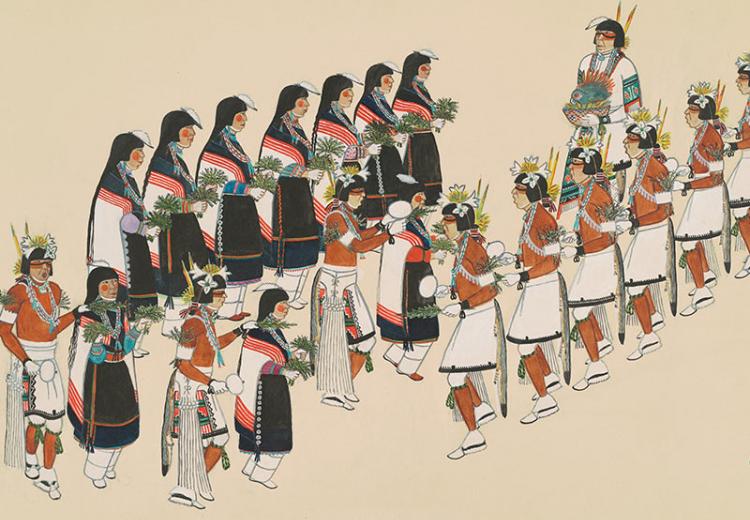Language of Place: Hopi Place Names, Poetry, Traditional Dance and Song

Hopi Corn Dance.
"In my culture, we sing songs to show our happiness. We sing while we do our chores because songs seem to make the work go quickly and easily. We believe that when we sing songs, we are sharing our feelings of happiness with nature. Since the corn plants are also our children, we sing to the corn, too. Our elders tell us that when we sing to our corn children, we make them happy. When they are happy, they grow better.
I was also taught that wherever there is singing, there is life. So when songs are sung, they too are born, just like people."
— Ramson Lomatewama, poet
In the summer of 2015, President Barack Obama made headlines when he officially returned the traditional Athabaskan name, Denali, to the largest mountain in North America. This act may have come as a surprise to some in this day and age when the importance of place names can be lost amid our modern technocracy. Many place names across our nation are imbued with history, culture, power, and significance that is often overlooked—but, through them the very essence and spirit of a place can be understood. Returning the name Denali to the mountain was a way of recognizing and honoring the relationship Native Alaskans have had with the mountain for centuries.
This English Language Arts unit has students delve into the “language of place.” Through a careful study of various literary forms—place names, poetry, song and traditional dance—students can explore the landscape and culture of the Hopi Tribe from the southwestern United States. Through these forms of expression, student will have the opportunity to “read” the products of Hopi culture and engage in their rich cultural heritage through one of the Hopi’s most fundamental natural resources—corn!
In Lesson 1, students will explore “Hopitutskwa,” the Hopi homeland, through maps and place names (using English translations) to make inferences about Hopi cultural relationships to landscape and place and uncover the importance of naming places in their own lives. Lesson 2 involves a study of contemporary Hopi poet, Ramson Lomatewama. Corn is a favorite subject of Lomatewama’s poetry, which is rich in figurative language describing the poet’s intimate relationship with the land. Lesson 3 has students experience traditional dance and song of the Hopi to further their understanding of this culture’s relationship to place.
Guiding Questions
How do the Hopi use the language of place names, poetry, and song and traditional dance to demonstrate their cultural relationships between people and place?
